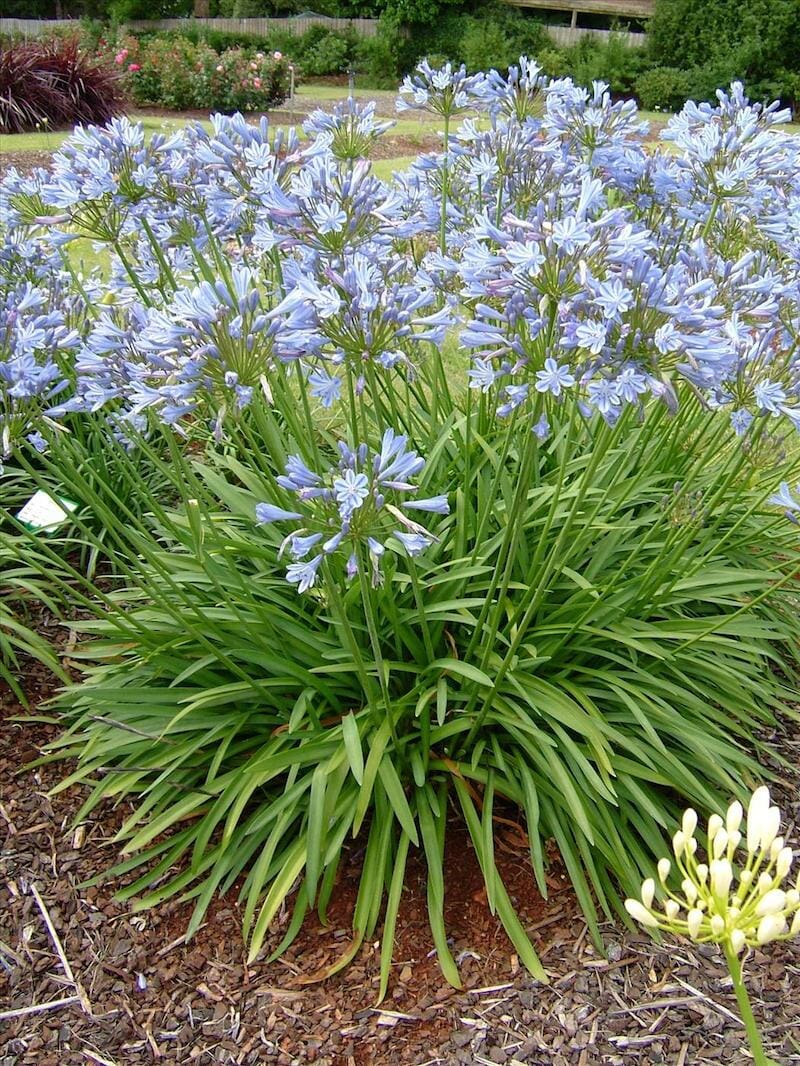Agapanthus Care Tips for Lush and Vibrant Flowers
Mastering the Art of Agapanthus Care: Vital Actions for Healthy And Balanced Growth and Dynamic Flowers
In the world of horticulture, the farming of agapanthus stands as a satisfying undertaking for those that seek to nurture these elegant blooming plants. From selecting the ideal variety to mastering trimming techniques, the journey towards growing growing agapanthus plants is multifaceted and holds the vital to opening the full capacity of these herb gems.

Choosing the Right Agapanthus Selection

When choosing the appropriate Agapanthus range for your garden, think about variables such as climate suitability, flower shade, and development practice. Agapanthus, generally known as Lily of the Nile or African lily, is available in a range of shades varying from tones of blue and purple to white. Choose a flower shade that enhances your existing yard scheme to create a harmonious landscape. Additionally, think about the environment in your area to make certain the Agapanthus variety you choose can prosper in your certain conditions. Some ranges are a lot more forgiving of chilly temperatures, while others prefer warmer environments. Recognizing the growth routine of various Agapanthus selections is important for appropriate placement within your garden. Some varieties have a clumping development practice, perfect for boundaries or containers, while others have an even more spreading nature, ideal for ground cover or mass plantings. By very carefully assessing these variables, you can select the perfect Agapanthus variety to improve the appeal of your garden.
Perfect Growing Conditions
Taking into consideration the optimum ecological demands is crucial for effective Agapanthus farming. Agapanthus grows in well-draining soil with a slightly acidic to neutral pH degree. When growing, select a location that receives full sunshine to partial shade. In hotter climates, offering some mid-day shade can prevent scorching of the fallen leaves. Agapanthus plants are sensitive to cold temperatures and need to be shielded from frost throughout cold weather.
To make certain healthy growth and dynamic blooms, plant Agapanthus light bulbs at a deepness of regarding 2-4 inches and room them 8-12 inches apart. Mulching around the base of the plants helps keep moisture and subdues weed growth.
Watering and Feeding Tips
Maintaining proper dampness levels and providing crucial nutrients are crucial elements in the treatment program for Agapanthus plants. When it concerns sprinkling Agapanthus, it is essential to strike a balance. These plants choose continually wet dirt yet are at risk to root rot if overwatered. During the growing period, water deeply when a week, ensuring the dirt is well-draining to stop waterlogging. In hotter climates or throughout periods of drought, more constant watering may be required to keep the soil uniformly damp. Nevertheless, decrease watering in the winter season to stop water logged conditions.
Fertilizing Agapanthus is important for promoting healthy development and respected blooms. Apply a balanced fertilizer, such as a 10-10-10 formula, in the very early spring as brand-new development arises. Repeat this application every 6-8 weeks throughout the growing period. Prevent excessive fertilization, as it can result in lavish foliage at the expense additional resources of flowers. Always follow the manufacturer's instructions for appropriate dilution and application methods. By adhering to these watering and feeding ideas, you can ensure your Agapanthus plants prosper and produce lively, long-lasting blossoms.
Trimming Strategies for Agapanthus
Trimming Agapanthus plants at the suitable times and with appropriate methods is critical for maintaining their wellness and promoting ideal development and flowering. The optimal time to trim Agapanthus is in late winter months or early springtime before brand-new development arises. Begin by eliminating any yellowing or dead leaves near the base of the plant. Cut them as close to the ground as feasible without harming the emerging shoots.
Deadheading spent blossoms can likewise redirect the plant's energy into generating more flowers rather than setting seeds. If you want to accumulate seeds for breeding, leave some flowers to completely dry and mature on the plant.
Remember to make use of tidy, sharp devices to make specific cuts and lower the danger of presenting illness. Agapanthus. Regular trimming will certainly help maintain your Agapanthus looking cool and healthy while making certain an abundant display screen of attractive flowers
Handling Common Parasites and Conditions
After making sure correct pruning methods for Agapanthus, it is vital to resolve usual pests and illness that can influence the health and vigor of these plants. One common pest that impacts Agapanthus is the Agapanthus gall midget.
Furthermore, Agapanthus plants can endure from origin rot if they are grown in poorly draining pipes dirt. By being this contact form alert and taking prompt action against diseases and insects, you can aid your Agapanthus plants flourish and produce vibrant blooms. Agapanthus.

Verdict
In verdict, grasping the art of agapanthus treatment involves choosing the appropriate selection, giving excellent planting conditions, appropriate watering and feeding, proper trimming methods, and addressing common bugs and illness. By adhering to these vital steps, you can make certain healthy growth and lively flowers for useful link your agapanthus plants. Bear in mind to on a regular basis keep track of and keep your plants to advertise their total well-being and longevity.
To ensure healthy growth and lively blooms, plant Agapanthus light bulbs at a deepness of regarding 2-4 inches and area them 8-12 inches apart. By complying with these watering and feeding pointers, you can ensure your Agapanthus plants prosper and create lively, long-lasting flowers.
One typical pest that influences Agapanthus is the Agapanthus gall midget. Additionally, Agapanthus plants can experience from origin rot if they are planted in badly draining pipes soil. By complying with these crucial steps, you can make certain healthy and balanced growth and vivid blossoms for your agapanthus plants.